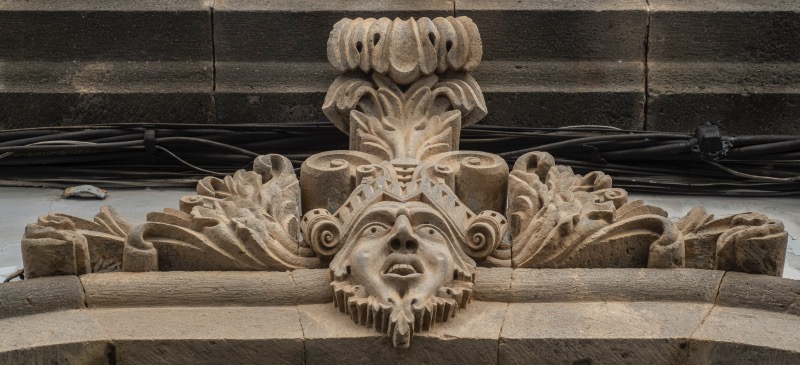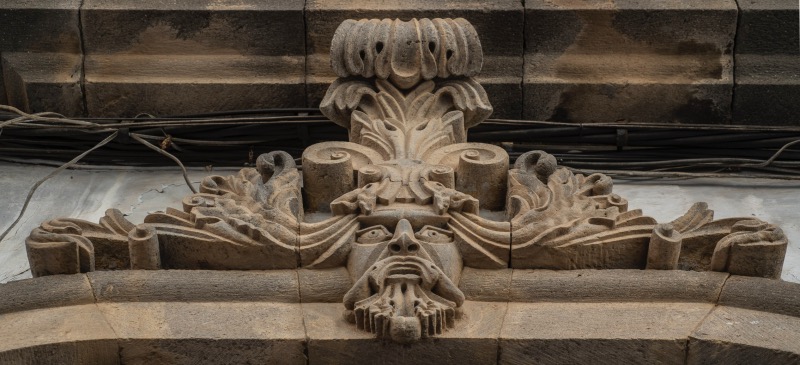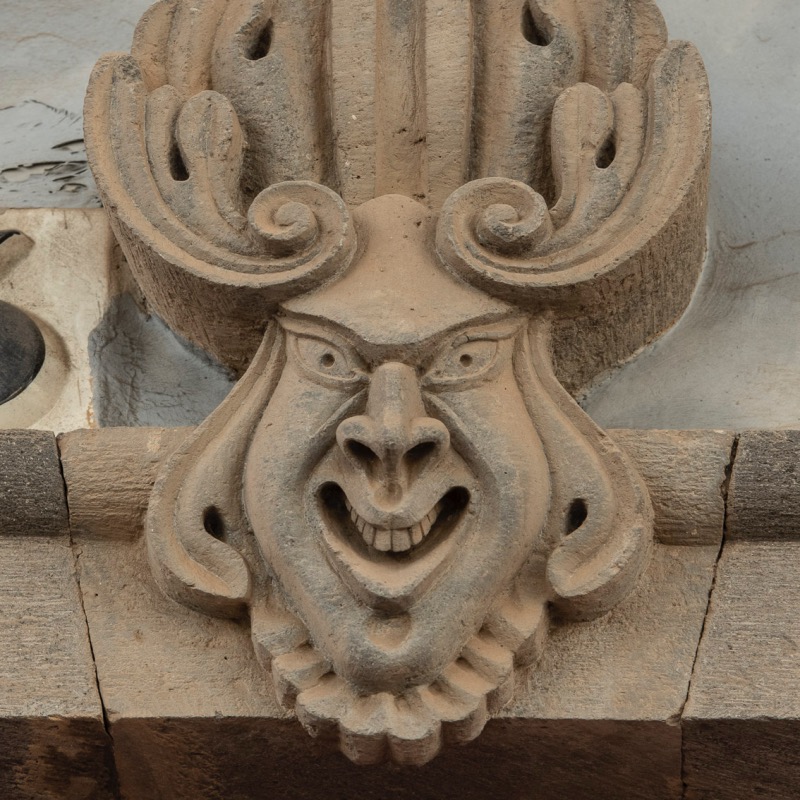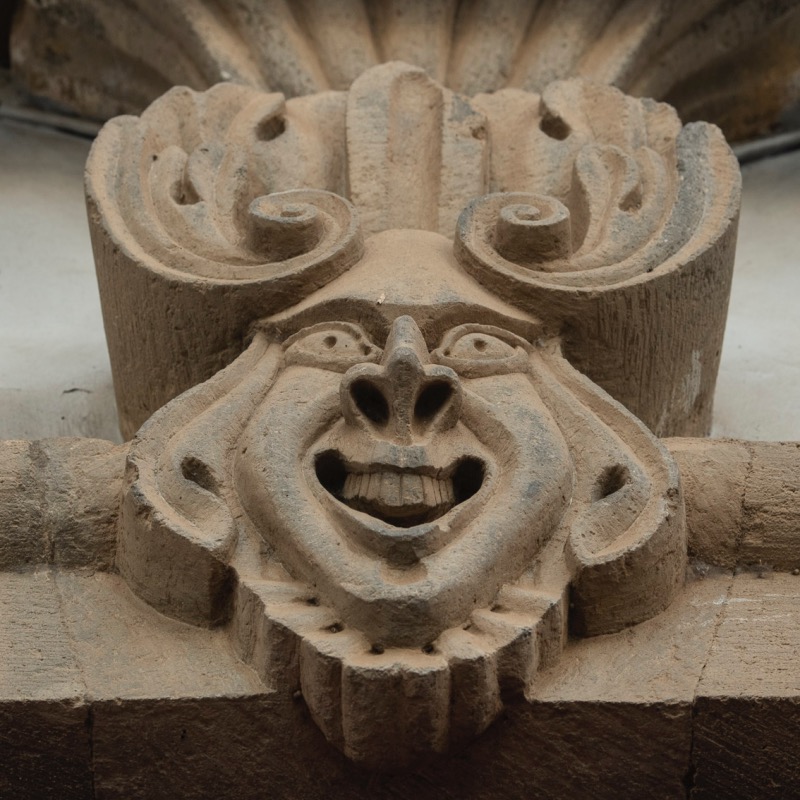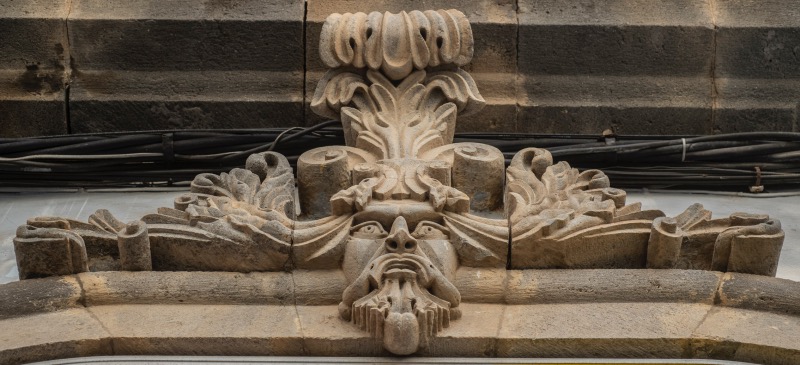Five stone carvings on a building façade in Vegueta as a reminder of the fiesta’s historical importance in the city.
Throughout the 21st century (before the pandemic and this 2021 edition’s cancellation), the Las Palmas de Gran Canaria Carnival has been beating in the heart of Santa Catalina Park, between the homonymous port and Las Canteras Beach. Every year, a stage is installed where the main contests and galas take place. However, in recent years, fiesta lovers have brought back the so-called Day Carnival in Vegueta, with more participation year after year.
Vegueta is the name of the city’s foundational borough, established in 1478. That first settlement founded by Spanish conquistadors started flourishing and for centuries was the Grancanarian capital’s main hub. There are records of Carnival being celebrated already back in the 16th century, thanks to the influence of Italian travellers.
And so it continued for many centuries after. At the beginning of the 20th century, social circles created in institutions such as the Gabinete Literario started celebrating what was called the “Carnaval Culto” (“Cultured Carnival”), holding the first float decoration contests (more than floats, they were lorries) or even costume contests to see who had the most elaborate and original ones.
From those years remains the vestiges left behind by the Romero brothers with stone carvings to remember their hometown’s also famous Carnival: Cádiz. They can be seen on the façade of a mansion on Juan de Quesada Street, near Santa Ana Square. These are just some traces that Carnival has left throughout history in Las Palmas de Gran Canaria.
*Photos: Nacho González

